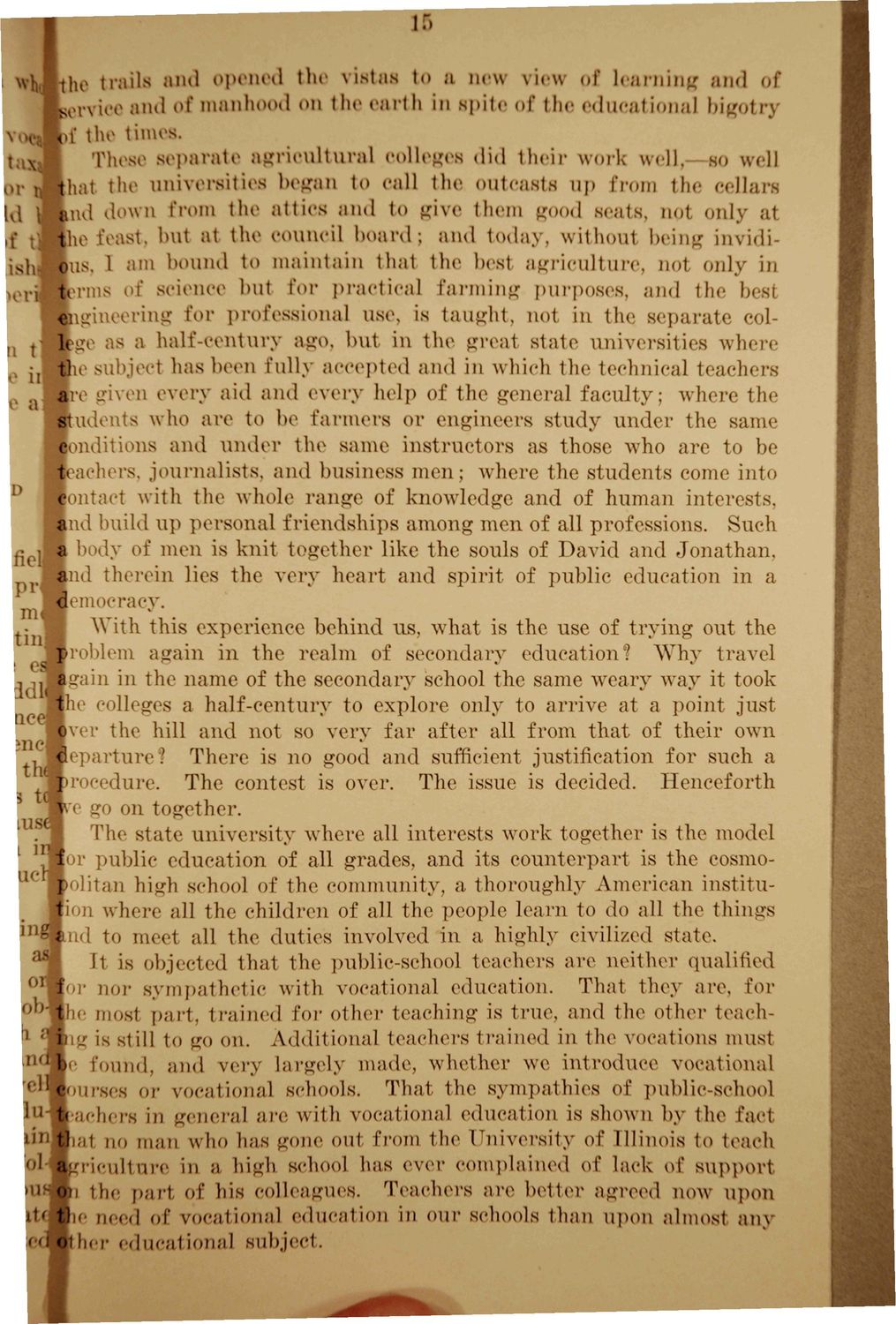Caption: Booklet - What is Involved in a Vocational Education (Davenport) (1915)
This is a reduced-resolution page image for fast online browsing.

EXTRACTED TEXT FROM PAGE:
If) Wf (ho trails and Opened the \istas to a new view of learning and of ie Lrvice and of manhood on the earth in spite of the educational bigoti \o<$ of the limes. x These separate agricultural colleges did their work well,—so well began to call the outcasts up from the cellars attics and to give them good seats, not only at council board; and today, without being invidimaintain that the best agriculture, tiol only in r J t h a t the universities Id imd down from the .f \\ the feast, but at the ish Ous. 1 am bound to terms of science but \\)v practical farming purposes, and the besl engineering for professional use, is taught, not in the separate collego as a half-century ago, but in the great state universities where u t he subject lias been fully accepted and in which the technical teachers ii are given every aid and every help o\' the general faculty; where the a students who are to be farmers or engineers study under the same conditions and under the same instructors as those who are to be teaehers, journalists, and business men; where the students come into contact with the whole range of knowledge and of human interests, and build up personal friendships among men of all professions. Such g j a body of men is knit together like the souls of David and Jonathan. and therein lies the very heart and spirit of public education in a democracy. in J With this experience behind us, what is the use of trying out the oblem again in the realm of secondary education? AVhv travel • , ,, I g a m in the name of the secondary school the same weary way it took t Mho eolleu s a half-century to explore only to arrive at a point just over the hill and not so very far after all from that of their own " C < ture? There is no good and sufficient justification for such a ' procedure. The contest is over. The issue is decided. Henceforth 3 t* A go on together. LUS The state university where all interests work together is the model L J public education of all grades, and its counterpart is the cosmollr '™olitan high school of the community, a thoroughly American instituion where all the children of all the people learn to do all the things nd to meet all the duties involved in a highly civilized state. It is objected that the public-school teachers are neither qualified or nor sympathetic with vocational education. That they are, (or °"' the most part, trained for other teaching is true, and the other teach,J ; ' i n g is still to go on. Additional teachers trained in the vocations must mi t)<- found, and very largely made, whether we introduce vocational "courses or vocational schools. That the sympathies of public-school I lu wachers in general are with vocational education is shown by the fact j ib t!i;it no man who has gone out from the University of Illinois to teach Agriculture in a high school has ever complained oi' lack o( support ' i Ki the part of his colleagues. Teachers are better agreed now upon itfjtlie n< I of vo itional education in our schools than upon almost am 1 other educational subject.
|